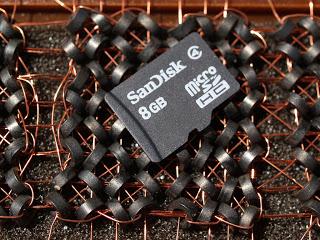Cosa resta dei ricordi? Una vecchia foto, un oggetto del passato, un libro. Aprendo un vecchio baule, anche dopo anni, si resta sempre colpiti dal fatto che i nostri ricordi, spesso sopiti, vengano risvegliati improvvisamente da un oggetto, magari una vecchia foto, che, nonostante il passare degli anni, riesce ancora ad evocare in noi sentimenti ed emozioni.

Sembra banale, ma questo è anche dovuto al fatto che, una foto stampata, se mantenuta in ambiente ideale, si conserva perfettamente anche per centinaia di anni.
Proviamo a fare un paragone con le foto attuali, completamente digitali. La nostra macchina fotografica sarà ancora funzionante fra un centinaio di anni? la schedina SD al suo interno?
E, se le abbiamo salvate sul nostro computer, esso ci sarà ancora fra cento anni? La risposta a tutte queste domande è “no, non credo che ci saranno”. E allora, che fine faranno, le nostre foto, i nostri ricordi?
Internet e le recenti tecnologie hanno cambiato il modo in cui fruiamo dei nostri ricordi, la digitalizzazione ha permesso di produrre a basso costo testi, foto, video e altro. Tutto sembra andare in quella direzione, la creazione di contenuti digitali “nativi”, che non necessitino nemmeno più di essere salvati in un dispositivo locale, ma sulla famosa nuvola di cui si parla tanto, di questi tempi.
E' questo il futuro che ci aspetta? Per capirlo dobbiamo fare un passo indietro di qualche anno:
Le prime fotocamere digitali commerciali sono apparse nei primi anni 90, qualcuno ricorderà ancora la Sony Mavica FD5, una fotocamera digitale che usava, come supporto di registrazione, un floppy disk da 3,5”, scattando foto ad una risoluzione di 640x480px. Allora il mercato era agli esordi, e ancora nessuno pensava che, a meno di quindici anni di distanza, avremmo avuto in tasca dispositivi in grado di scattare foto a 8, 10 o più Megapixel.
Internet? Basta andare indietro ai primi servizi di hosting gratuiti, come Geocities acquisito poi da Yahoo e definitivamente chiuso nel 2009, o a Deja News, gli archivi di Usenet, poi acquisiti da Google e diventati Google Groups. Vogliamo parlare dei PC domestici? Siamo passati dai pochi GigaByte dei primi Hard Disk ai Terabyte attuali, dai primi nastri, o tape, su cassetta, per i backup dei sistemi server, al backup sul Cloud.
In pochi anni abbiamo visto crearsi incredibile massa di informazioni, sempre crescenti e sempre presenti, fino, appunto, alle prime dismissioni e chiusure. Personalmente, ho avuto modo di fare un esperimento interessante. Ho recuperato un vecchio backup da un PC di qualche anno fa, e ho ritrovato una lista di “bookmark”, di preferiti, di siti che ritenevo interessanti allora. Ho provato ad aprire alcuni di questi link, ma, amaramente, ho dovuto constatare che quasi tutti erano riferiti a siti non più esistenti, modificati o spostati nel frattempo. Dove è finita, allora questa massa di informazioni, siti, ricordi?
Qualcuno potrà obiettare che molta era “fuffa”, contenuti di poco conto, ma chi decide la qualità dei contenuti se non gli stessi fruitori? C’è già qualcuno che si chiede dove finiranno tutti i contenuti dei grandi social network, quando chiuderanno, o se ha senso, anche se qualcuno rabbrividirà al pensiero, mantenere in vita degli account anche quando il proprietario in vita non lo è più.
Una vera risposta non c’è; perché ancora non sappiamo se fra quindici anni Facebook, Twitter o quello che sarà arrivato nel frattempo, saranno ancora in vita e accessibili, di certo sappiamo che tutti i grandi fornitori di servizi Cloud si stanno attrezzando per salvare, per quanto possono, i loro dati in una forma che non sia per l’uso temporaneo, ma una specie di conservazione a lungo termine, e, in una forma di passato che ritorna, grandi produttori sono tornati a produrre i “tape”, ovvero supporti a nastro, ovviamente più veloci e capienti di un tempo. Ma cosa rimane di tutto il resto?
Fortunatamente, esistono delle fondazioni che, da anni, si occupano di preservare il più possibile la memoria e la traccia del nostro passato recente digitale, una fra tutte, Archive.org. una fondazione che dal 1996 scatta delle “istantanee” continue sul web, con motore speciale che si occupa della catalogazione continua di tutte le risorse ricercabili. Un lavoro immane, ma che permette, ad esempio, di andare a controllare come fosse Google nel 1998, o visitare siti che nel frattempo sono stati chiusi. Nonostante gli sforzi, non tutto riesce ad essere salvato o indicizzato, e molto andrà comunque perso.
Internet, dunque, dimentica facilmente. Nel frattempo, voi fate un backup.
Luca Perencin | @No_CQRT
The Internet forgets
What remains of memories An old photo, an object from the past, a book.
When you open an old trunk, even after years, you always remain astonished by the fact that our memories, often dormient, are suddenly brought to life by an object, perhaps an old photo that, in spite of the passing years, still manages to cause sentiments and emotions in us.
It sounds trivial, but it's also due to the fact that a printed photo, if kept in the right conditions, can be perfectly conserved for hundreds of years. Let's do a comparison with photos nowadays, which are completely digital. Will our photocamera still be working in a hundred years? The SD card inside?
And if we saved them on our computer, will that be around in a hundred years? The answer to all of these questions is presumably "no, no they won't". So what's going to happen to our photos, our memories?
Internet and recent technologies have changed the way we enjoy our memories, the digitalization has allowed us to produce low cost text, photo, video and more. Everything seems to be going in that direction, the creation of "native" digital content, that doesn't need to be saved on a local device, but on the famous cloud everyone's talking about, these days.
Is this the future in store for us? In order to understand we need to go back a few years: the first digital commercial photocameras came out in the early 90s, someone will surely remember the Sony Mavica FD5, a digital camera that used, as a support, a 3,5'' inch floppy dish, and took photos with a resolution of 640x480px. The market was in its prime, and nobody thought that, in less than 15 years, we'd have in our pockets devices capable of taking photos at 8, 10 or more Megapixels.
Internet? Just go back to the first free hosting services, like Geocities bought by Yahoo and then finally closed in 2009, or Deja News, the first Usenet archives, then bought by Google and turned into Google Groups. Do we want to talk about domestic PCs? We've gone from the few GigaByte of the first hard disks to the terabyte we have now, from the first tapes for server backup, to cloud backup.
In just a few years we've seen a huge mass of information come to life, always growing, and always present until the first downs and closures. Personally, I had the chance to do an interesting experiment. I got an old backup from a PC from a few years ago, and found a list of bookmarks, of websites I found interesting at that time. I tried opening some of these links, but with some bitterness I had to aknowledge that almost all of them pointed to websites no longer existent, modified or moved in the meanwhile. Where has this whole mass of information gone?
Someone might say that there was a lot of junk, low quality content, but who decides on the quality of content if not the users themselves? There is already someone wondering where all the content of big social networks will end up, when they will close, or whether it makes sense, even if someone will shiver at the thought, to keep alive accounts after their owner is no longer alive.
There is no true answer; because we still don't know whether in 15 years Facebook, Twitter or what we'll have at that point, will still be live and working, but we do know that all the great suppliers of Cloud services are getting ready to save, as much as possible, the data in a form that isn't for temporary use, but a long term conservation, and like in a past form that returns, some great producers have gone back to producing tapes, obviously faster and bigger than before. But what happens to all the rest?
Fortunately there are some foundation that, for years, have been busy trying to preserve as much as possible the memory and track of our recent digital past, one among all, Archive.org., a foundation that since 1996 makes continuous photos of the web, with a special motor that deals with the continuous catalogation of all reserachable resources. A huge work, but that allows, for example, to go check how Google was in 1998, or visit websites that in the meanwhile have closed. In spite of the effort, not everything makes its way to being saved, and much will be lost anyway.
So the Internet easily forgets. In the meanwhile, you do a backup.
Luca Perencin | @No_CQRT







